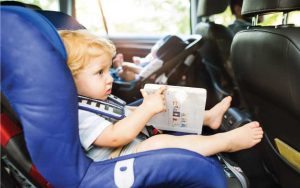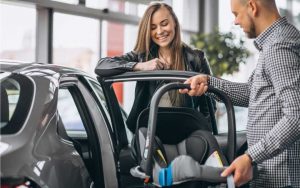In hindsight, a family may be seen mainly as a mode of transportation for your loved ones and you. In time, however, you’ll find that you’ll be expecting a whole lot more from it, especially as your family expands. For one, it’ll need to multitask in a number of ways.
You’ll also have to think about the safety of your passengers, aka your family members as well. In many families, the possibilities of needing to transport elderly parents, pets, bags of all kinds, and many other items are high too.
Here are some tips to help you make the right choice in a family car.
Hatchback or Saloon?
To those who are familiar with both cars, this one’s akin to size vs flexibility. Saloon cars can be deceptively bigger-looking and yes, they have slightly more spacious seats and they may even have a bigger load space in the boot. However, their somewhat narrow openings and higher boot lips can spell inconvenience when it comes to, say, loading a pushchair into it. In this arena, the saloon seems to lack flexibility.
A hatchback is decided, more practical in the sense that it allows for easier transportation of almost anyone and anything, within reason, of course. It has ample cargo space and rear cargo storage which is accessed by way of a hatch that is hinged at the top of the vehicle, above the rear window. Because the roofline is extended, allowing the rear window to descend from further back, the cargo space is larger. If the hatchback’s rear seats are folded down, it may nearly triple the available cargo space.
Wide-opening doors
Opting for four doors instead of two is a given if you have your family in mind. However, make sure that the back doors open wide enough for you to install a child car seat and get younger children in and out of the car. This is especially important if you suffer from a bad back or are a tall person.
Wide-opening doors are also practical if you regularly transport adult family members, especially those who are elderly or mobility-impaired.
Sliding rear doors are found on some MPVs and these offer even more convenient access — especially in cramped car parks.

Another important feature worth looking out for when you’re considering a family car is a raised rear seating. Also known as ‘stadium seating’ — where the rear seats are higher-set than that upfront, this is a feature usually limited to MPVs and 4x4s. This makes it easier to fit child car seats, and it also gives children a better view of what’s going on in the front.
If you buy a car with stadium seating, ensure the rear seat head restraints are still easy to remove. This is important if you have to fit a child safety seat in the future.

- Headroom, particularly if you’re tall
- Shoulder and hip room, especially if the rear seat will be used for three adults
- Horsepower
- Fuel tank capacity
- Safety specifications
- Performance and appearance specifications
When to consider an MPV
MPVs are all about practicality, and this doesn’t mean merely people-carrying or loading of items — it’s about being adaptable and flexible too. MPVs may not be the best looking for cars, but they are probably the most practical, versatile cars on the market.
Furthermore, if you have three young children, all needing to be in child car seats, a people carrier or larger 4x4s is probably the only viable option.
Five-seater cars with two fold-up seats in the boot can also be useful. You may, after all, have to transport more people now and then.
A seven-seater is, of course, the handiest of all, but your family may not be large enough to need all of them, all of the time. Ask yourself how often you need to carry seven people — if it’s only very rarely, you can potentially save a lot of money by choosing a five-seater.
Switching off the passenger airbag
If you need to fit a rear-facing baby car seat to the front passenger seat, you must choose a car that allows you to deactivate the front airbag. It should be easy to turn off the airbag yourself — read the instructions in the owner’s manual to locate the airbag ‘off’ switch (often in the glovebox). However, don’t forget to reactivate it when you have an adult front-seat passenger or when your child is big enough to be seated in front.
Good storage
This may not be the main criteria of a car, but if you’re buying a family car and you have children, ample storage space to transport children’s toys, food, drinks, and all things related to children and family life would be most welcome.
Be wary of underfloor storage compartments though, in the rear footwells of some cars. These might seem useful, but not if you’re using an Isofix-mounted child car seat with a support leg, which cannot safely stand on top of a hollow storage area.
Sliding seats
Rear seats that slide back or forth is a plus in a family car. Need more legroom? Just push them back! For more boot space, slide them forwards. Sliding them forward can also bring children closer to the front seats and nearer to the front passengers and driver.
Note: A small degree of recline on the rear seats is also a good feature to stop kids’ heads lolling forwards if they fall asleep.
Other features in a good family car
Integrated sunblinds or UV-filtering tinted rear windows can help limit sun exposure on long journeys.
The leather interior is a practical choice, as you can wipe it down. Although beige looks more classy, darker coloured interiors are much better at hiding the inevitable spills and stains you’ll get with young kids.
Seat-back DVD screens can keep young passengers suitably entertained during long journeys. If these are fitted in your choice of car, you can get inexpensive aftermarket systems that simply plug into the car’s 12v power supply.
Speaking of 12v power sockets, the more you have in the car, the better. You might want one for your phone charger or navigation system and a couple more for your children and spouse to plug in their digital gadgets and phone.


